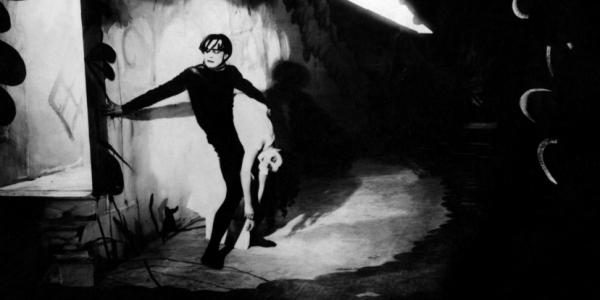As a new learning subject we were taught about the style ‘German Expressionism’ which works with the early 20th century German art movement that emphasised the feelings or inner ideas of the artist over the reproduction of reality.
To help me understand better about this style of film watch a short recording that made by the tutor where in the video I could understand a little more about the German Expressionism style with shadow techniques, framing, constrate and other styles that I can learn more.


Images:



The Cabinet of Dr. Caligari (1920)-source: Decla-Bioscop
Examination of styles German Expressionism:
Warning Shadows (1923)
Director: Arthur Robison
In Arthur Robison’s 1923 film, an illusionist uses the famed revelatory shadows of German expressionism to create a morality play for a gathering of rich friends in a manor house. The count, who has invited the dinner guests, is subsumed with jealousy over his beautiful young wife, and with good reason – the shadow-play acts as a warning about the consequences of adultery and possessiveness.

Metropolis (1927)
Fritz Lang’s silent film uses expressionist imagery to comment on technology consuming society. The film is deep in exaggerated imagery heightening the emotion that drives the plot.
Metropolis mingles traces of expressionist style with gothic style and a futurist aesthetic that is frequently echoed in contemporary science-fiction cinema. Its extreme vision of a society utterly riven by class, with the rich breathing the fresh air in the bright light at the top of the city and the workers toiling below in the dark, is an expressionist rendering of the economic imbalances in Weimar Germany, following hyperinflation and the industrial disputes of the early 1920s. The use of Helldunkel here expresses not just emotional angst but also social critique.
Nosferatu (1922)
F.W. Murnau’s film is a thinly veiled adaptation of Bram Stoker’s “Dracula”. And it stands today as one of the most visually effective horror films.
Something of an anomaly within expressionist cinema, Nosferatu makes extensive use of real-world locations, rather than recreating its world solely within a studio. As such, it harks back to expressionism’s roots in German Romanticism, and there is a lyrical, pastoral beauty to its early scenes.
Link:
- https://www.movementsinfilm.com/german-expressionism
- https://www.studiobinder.com/blog/german-expressionism-film/
- https://www.bfi.org.uk/lists/10-great-german-expressionist-films
With all the research I managed to learn more about the styles of German Expressionism that I did not have the knowledge. This style reminded me of farias films that became inspirations that this new generation did as the films of the director Tim Burton.
Some of these films are my favourites because of the contrast that each film has, the colours that have been used and the beautiful way that the director has updated us in this new era.